Haiti is a small island nation in the Caribbean Sea, with a wealth of biodiversity and an array of birds that have evolved to thrive in its unique environment.
From the diminutive hummingbirds to the stately raptors, the avian species that inhabit the island are an integral part of its natural landscape. Many of these birds are endemic to Haiti, existing nowhere else in the world.
In this article, we will explore the various species of Haiti birds, their habitats, and the conservation efforts that are being undertaken to protect them.
1. Hispaniolan Trogon
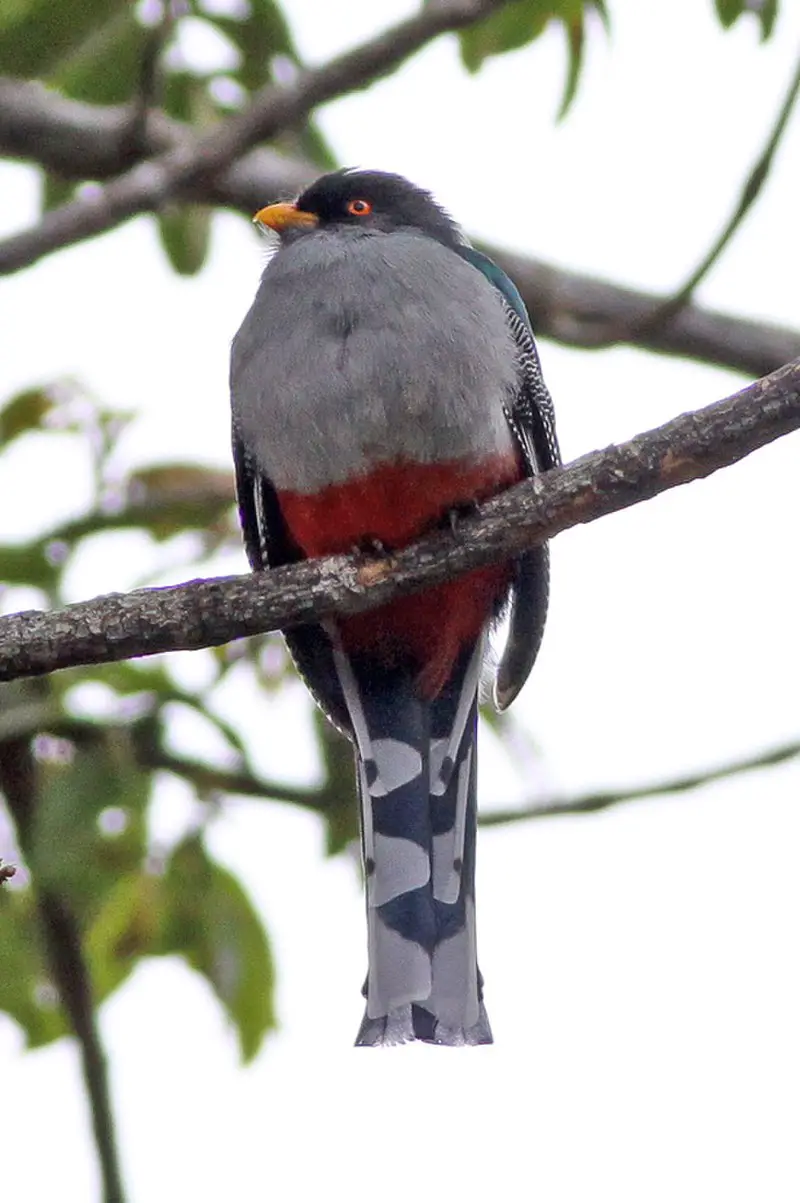
The Hispaniolan trogon is a stunning bird endemic to Haiti and the Dominican Republic in the Caribbean. It has brilliant colours, most notably its rose-coloured back, deep blue face, bright yellow belly and red tail feathers.
As one of only two species of trogons found in the Caribbean region it is fittingly recognised as national bird of Haiti.
Its distinct features include long graduated tails, small feet and short thick bills which adds to their beauty.
The feeding habits are mainly on fruits like figs but also insects such as beetles and moths too.
They build nests in hollow tree cavities or holes made by woodpeckers making them quite secretive birds that can be hard to spot within dense forests they inhabit with relative ease due to their agility flying between trees at high speeds.Scientific classification:
| Kingdom | Animalia |
| Phylum | Chordata |
| Class | Aves |
| Order | Trogoniformes |
| Family | Trogonidae |
| Genus | Priotelus |
| Species | P. roseigaster |
Also Featured In: Birds That You’ll Find in Hispaniola,
2. Hispaniolan Parakeet
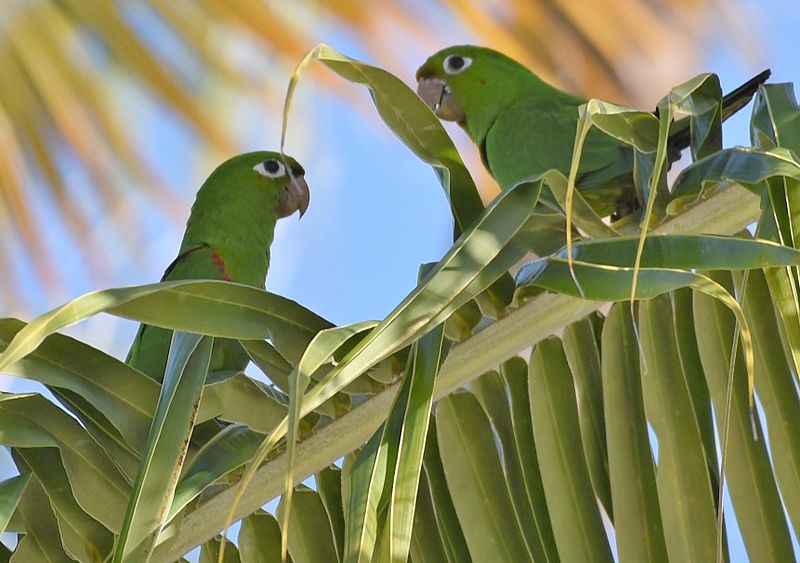
The Hispaniolan parakeet is a species of parrot endemic to the island of Hispaniola. It has green feathers, with yellow patches around its face and wings.
These birds are social creatures that form large flocks in open areas such as pastures or agricultural fields when foraging for food.
They feed mainly on fruits, nuts and insects but will also take advantage of bird seed from backyard feeding stations.
Feral populations have been spotted in Guadeloupe, Puerto Rico and even Miami – where they sometimes associate with canary-winged parakeets.
Despite their popularity among pet owners due to their intelligence and playfulness, these birds remain an endangered species due to habitat destruction caused by deforestation and hunting activities.Scientific classification:
| Kingdom | Animalia |
| Phylum | Chordata |
| Class | Aves |
| Order | Psittaciformes |
| Family | Psittacidae |
| Genus | Psittacara |
| Species | P. chloropterus |
3. Hispaniolan Spindalis
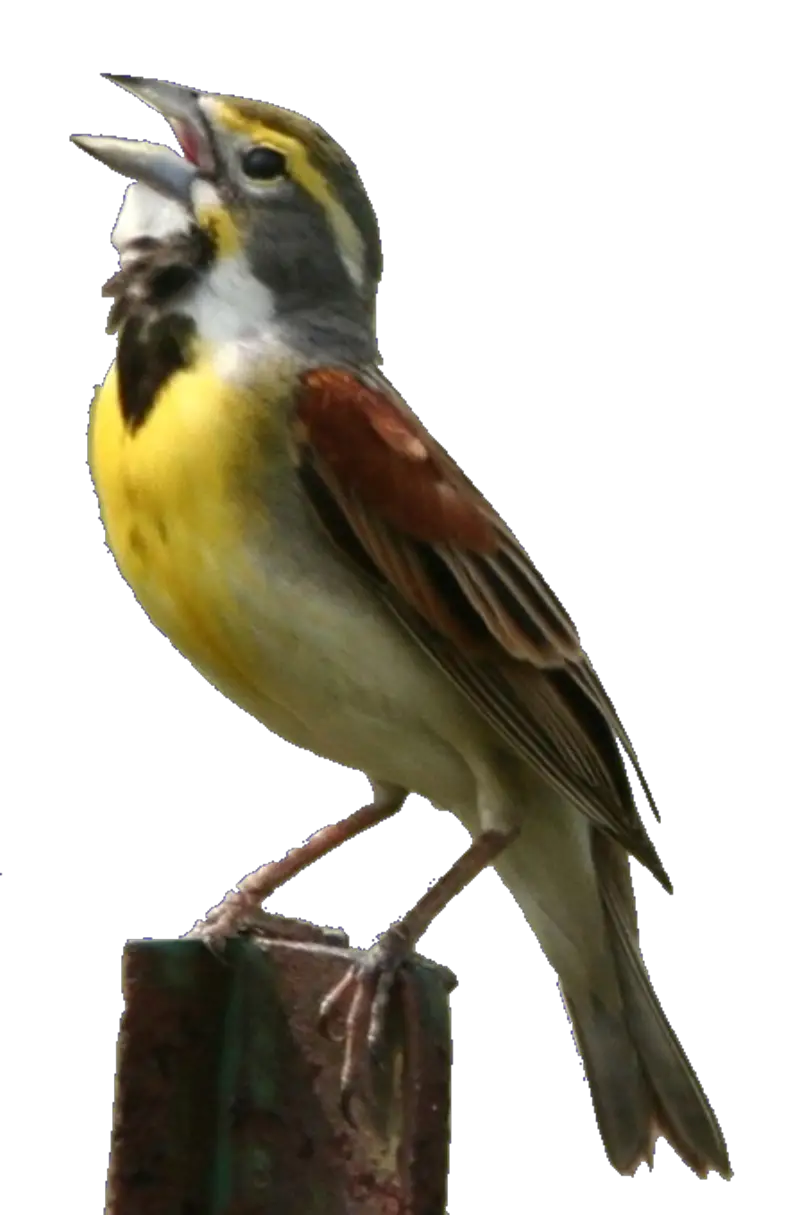
The Hispaniolan spindalis is a vibrant and colorful bird found only in the Caribbean island of Hispaniola. It’s one of four species in the Spindalidae family and was historically known as stripe-headed tanager.
Its plumage consists of bright yellow, red, black, white, gray and brown feathers that give it an attractive appearance. The wings are short but broad which helps them to fly fast from tree to tree looking for food like insects or fruits.
They can also be spotted near rivers searching for small fish or other aquatic invertebrates.
This amazing bird is quite social so you may find several individuals congregating together often forming pairs during breeding season when they build their nest on trees among branches close to trunks where they lay two eggs at once before incubation lasts about 13 days until hatching occurs around mid April through May period each year.Scientific classification:
| Kingdom | Animalia |
| Phylum | Chordata |
| Class | Aves |
| Order | Passeriformes |
| Family | Spindalidae |
| Genus | Spindalis |
| Species | S. dominicensis |
4. Hispaniolan Oriole
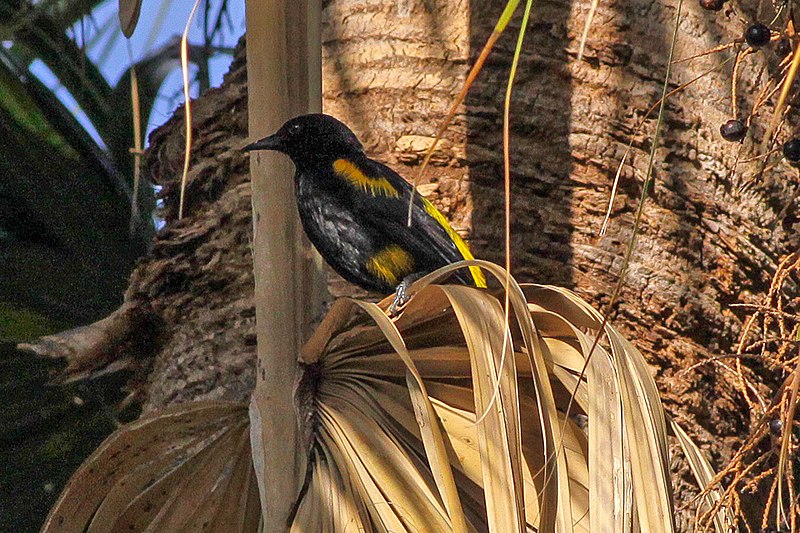
The Hispaniolan oriole is a beautiful bird found only on the Caribbean island of Hispaniola. Its scientific name, Icterus dominicensis, reflects its endemic existence to this region and it belongs to the family Icteridae.
The French zoologist Mathurin Jacques Brisson was one of the first people to document this species in 1760 when he collected a specimen from Saint-Domingue (now Haiti).
Today we can find these birds foraging among trees or perched atop branches singing their cheerful songs with yellow bodies, wings and tails contrasted against black heads and backs – making them quite striking.
They mainly feed on insects but also enjoy fruits like mulberries as part of their diet too. All in all, they are an important part of local ecosystems
Where they live so let’s hope that future generations will be able to appreciate them just as much as today�s observers do.Scientific classification:
| Kingdom | Animalia |
| Phylum | Chordata |
| Class | Aves |
| Order | Passeriformes |
| Family | Icteridae |
| Genus | Icterus |
| Species | I. dominicensis |
5. Cape May Warbler
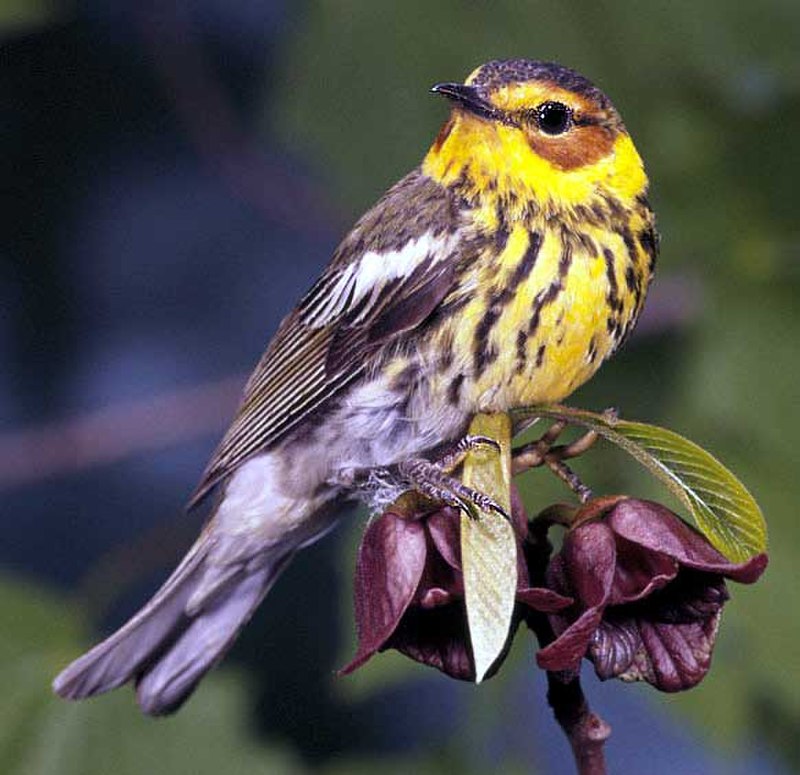
The Cape May Warbler is a species of New World warbler that breeds in northern North America, ranging from southern Canada to the Great Lakes region and New England.
During wintertime it migrates to the West Indies. This bird is an uncommon vagrant to western Europe with two records so far in Britain as of 2013.
It gets its name from being first discovered near Cape May, New Jersey back in 1811 by Alexander Wilson who noted its yellow breast plumage and black streaking on his specimen’s sides.
The males are more brightly colored than females but both sexes have white eye rings which help distinguish them among other warblers during migration season.
They mainly feed on insects and can often be seen foraging at high levels up amongst trees or shrubs where they tend their nests containing 3-5 eggs each breeding season between April – June.Scientific classification:
| Kingdom | Animalia |
| Phylum | Chordata |
| Class | Aves |
| Order | Passeriformes |
| Family | Parulidae |
| Genus | Setophaga |
| Species | S. tigrina |
Also Featured In: Birds that Migrate through Illinois in the Spring, Common Birds in Saskatchewan
6. Village Weaver
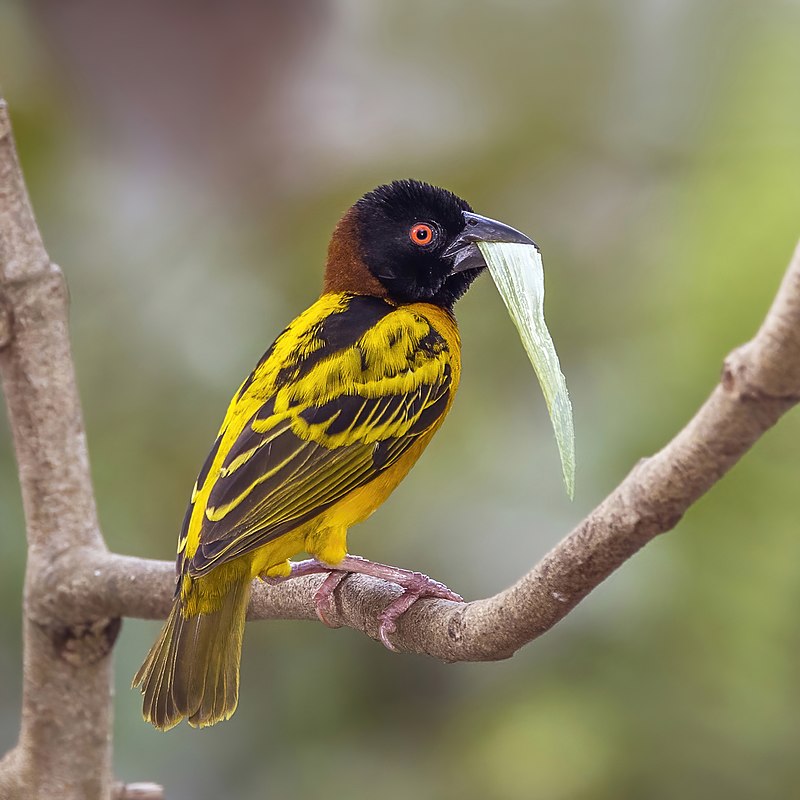
The Village Weaver is a bird found in sub-Saharan Africa, as well as on islands like Hispaniola and Martinique.
It has distinctive black heads with white spots on its back and wings.
They feed mainly on seeds but also eat some insects. The males build nests made of grasses that hang from branches or trees to attract mates during breeding season.
These birds are social creatures often seen in pairs or small groups foraging together in the same area.
Their calls are melodious chirps which can be heard throughout their range when they communicate danger or alert each other of food sources nearby.Scientific classification:
| Kingdom | Animalia |
| Phylum | Chordata |
| Class | Aves |
| Order | Passeriformes |
| Family | Ploceidae |
| Genus | Ploceus |
| Species | P. cucullatus |
7. Eastern Chat-Tanager
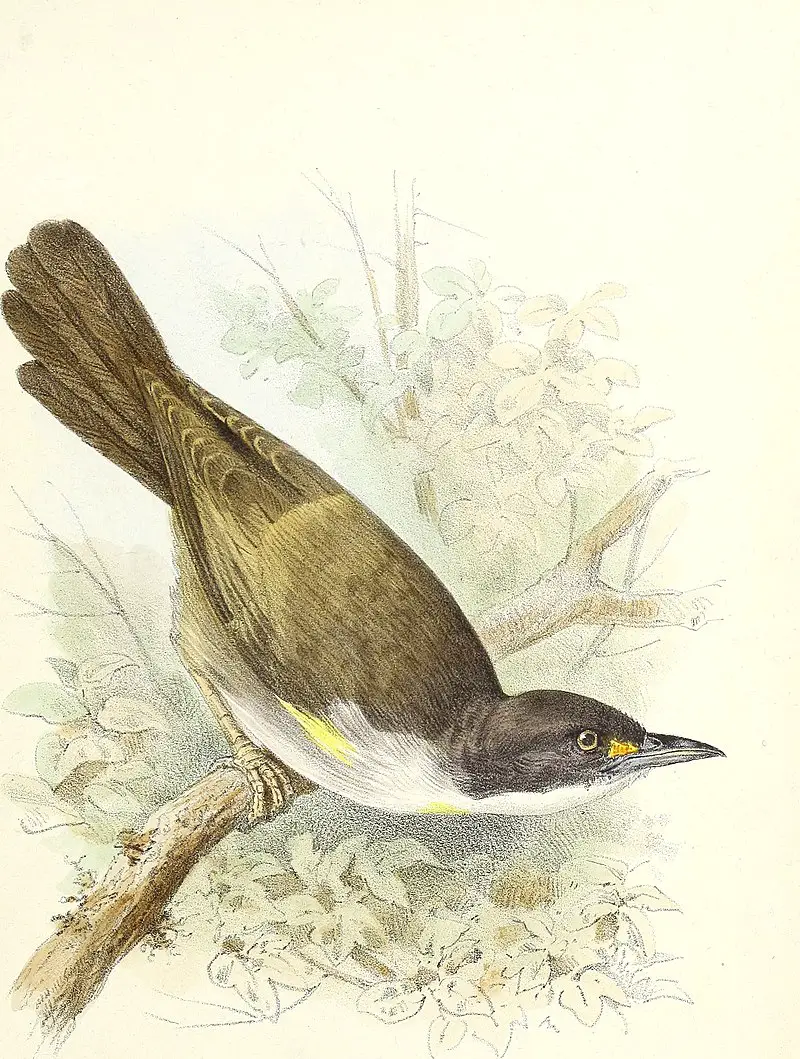
The Eastern chat-tanager is a Near Threatened bird species endemic to the island of Hispaniola. It belongs to the Calyptophilidae family and has three subspecies – C.
f. frugivorus, C.f neibae and C.f abbotti; with only one surviving in Haiti today.
This small passerine has grey wings, blue upperparts and white underparts on its body which makes it distinctive among other birds found in this area of the world.
The diet consists mostly of fruits as well as insects that they can find while foraging through trees or shrubs near their habitats located mainly at higher elevations on both sides of islands forming Hispaniola region..
Conservation efforts are needed if we want these beautiful creatures to stay around us for many more years.Scientific classification:
| Kingdom | Animalia |
| Phylum | Chordata |
| Class | Aves |
| Order | Passeriformes |
| Family | Calyptophilidae |
| Genus | Calyptophilus |
| Species | C. frugivorus |
8. Mimid

Mimid birds are a diverse family of passerines found in the New World. They have an impressive vocal range and many species excel at mimicking other bird songs, as well as noises from their environment.
Mimids can be identified by their flat heads with short crest feathers, long tails, large eyes and strong legs for hopping between branches.
These birds typically inhabit open woodlands or scrubland areas where they feed on insects such as beetles, caterpillars and grasshoppers.
Some species also supplement their diet with fruits or grains when available. While most do not migrate far during winter months some may undertake longer migrations to warmer climates if necessary to survive cold weather spells.
The wide variety of sounds these talented singers produce make them one of nature’s great musical performers.Scientific classification:
| Kingdom | Animalia |
| Phylum | Chordata |
| Class | Aves |
| Order | Passeriformes |
| Superfamily | Muscicapoidea |
| Family | Mimidae Bonaparte, 1853 |
9. Ashy-Faced Owl
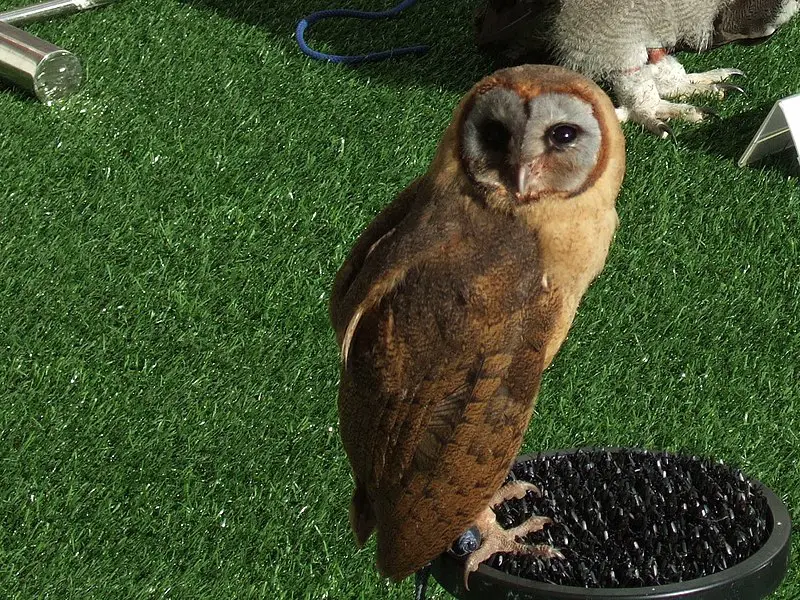
The Ashy-faced Owl is a species of owl found only on the Caribbean island of Hispaniola, split between Haiti and the Dominican Republic.
It has an ash grey face with white eyebrows above its yellow eyes, while its wings and tail are barred black and brown.
This bird prefers subtropical or tropical dry shrubland habitats as well as high altitude shrublands that have been heavily deforested.
Its diet consists mainly of small mammals such as mice and rats which it hunts at night by flying silently through open areas near their burrows.
The population of this species in recent years has decreased due to habitat destruction caused by human activities like logging, mining, agriculture expansion etc., making them vulnerable to extinction unless urgent conservation measures are taken soon.Scientific classification:
| Kingdom | Animalia |
| Phylum | Chordata |
| Class | Aves |
| Order | Strigiformes |
| Family | Tytonidae |
| Genus | Tyto |
| Species | T. glaucops |
10. Western Chat-Tanager
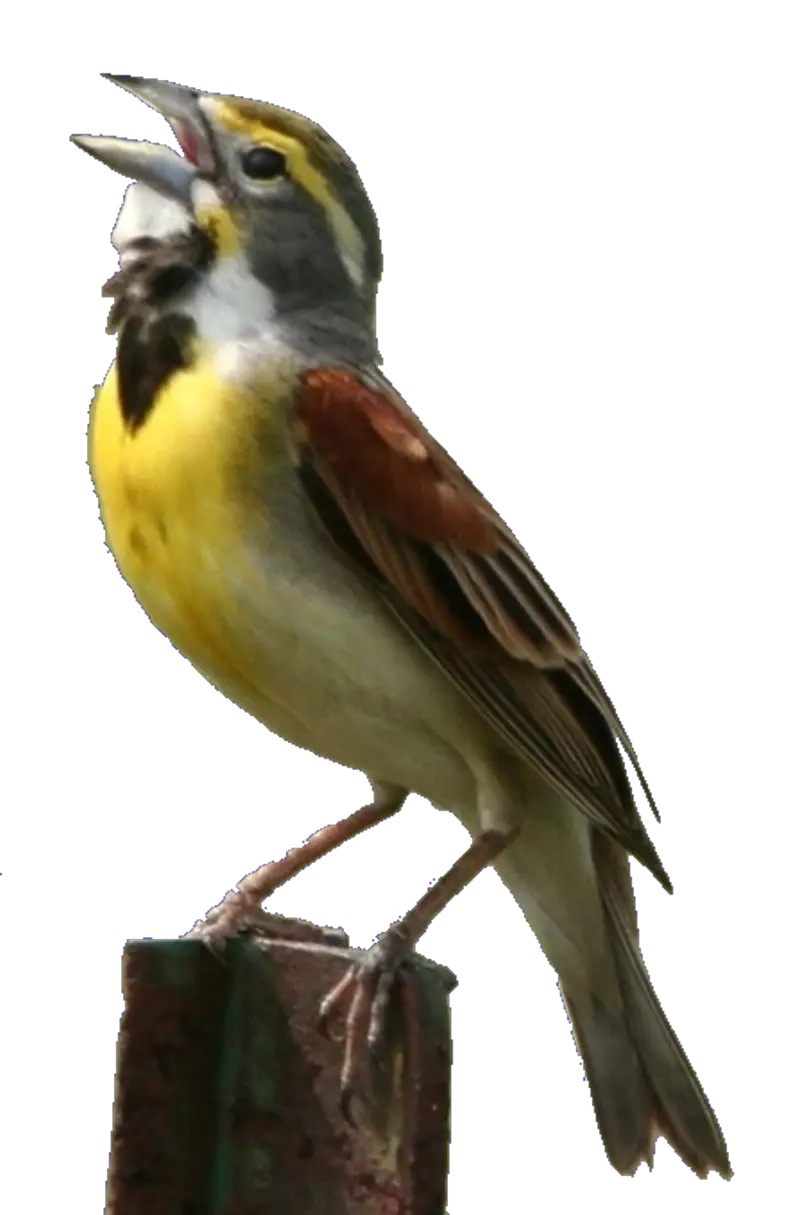
The Western chat-tanager is a beautiful, vulnerable passerine bird belonging to the family Calyptophilidae. Endemic to Hispaniola island shared by Dominican Republic and Haiti, it was once considered as a subspecies of Eastern chat-tanager.
The male has greyish head with whitish supercilium while its back and wings are olive green in color. Its breast is yellow orange fading in an ochre tone towards the belly region whereas throat area is white.
The female on the other hand exhibits browner upper parts than males and their underparts too appear duller compared to them.
Though similar looking species occur sympatrically, vocalizations can be used for distinguishing between both members of this genus effectively due to differences observed in range frequency or tonal quality among them.
Thus western chat tanagers have been able influence conservation efforts being made for saving these birds from extinction by easily identifying them without any confusion .Scientific classification:
| Kingdom | Animalia |
| Phylum | Chordata |
| Class | Aves |
| Order | Passeriformes |
| Family | Calyptophilidae |
| Genus | Calyptophilus |
| Species | C. tertius |
11. Northern Potoo
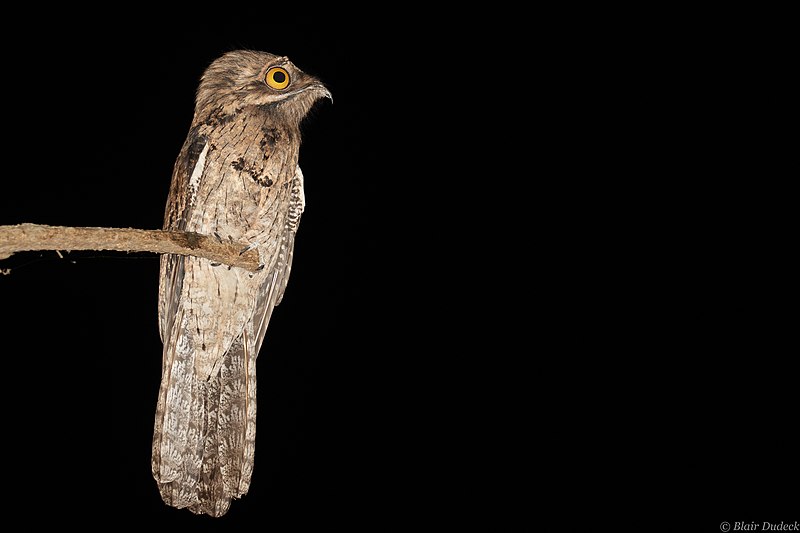
The Northern Potoo is a nocturnal bird belonging to the Nyctibiidae family. It inhabits Mexico, Central America and some of the Caribbean Islands such as Jamaica and Hispaniola where it can be found in tropical dry forests.
It was formerly classified as a subspecies of Common Potoo but due to differences in vocalizations they are now considered separate species.
This interesting bird has an almost comical appearance with its large head, long bill, short neck and disproportionately long legs that give it an awkward gait when walking on land.
Its plumage is mottled grey-brown which helps camouflage itself during the day while perched motionless on tree branches looking for prey at night.
The Northern Potoos call consists mostly or whistles ending with trills making them quite easy to identify within their range areaScientific classification:
| Kingdom | Animalia |
| Phylum | Chordata |
| Class | Aves |
| Order | Nyctibiiformes |
| Family | Nyctibiidae |
| Genus | Nyctibius |
| Species | N. jamaicensis |
12. Double-Striped Thick-Knee
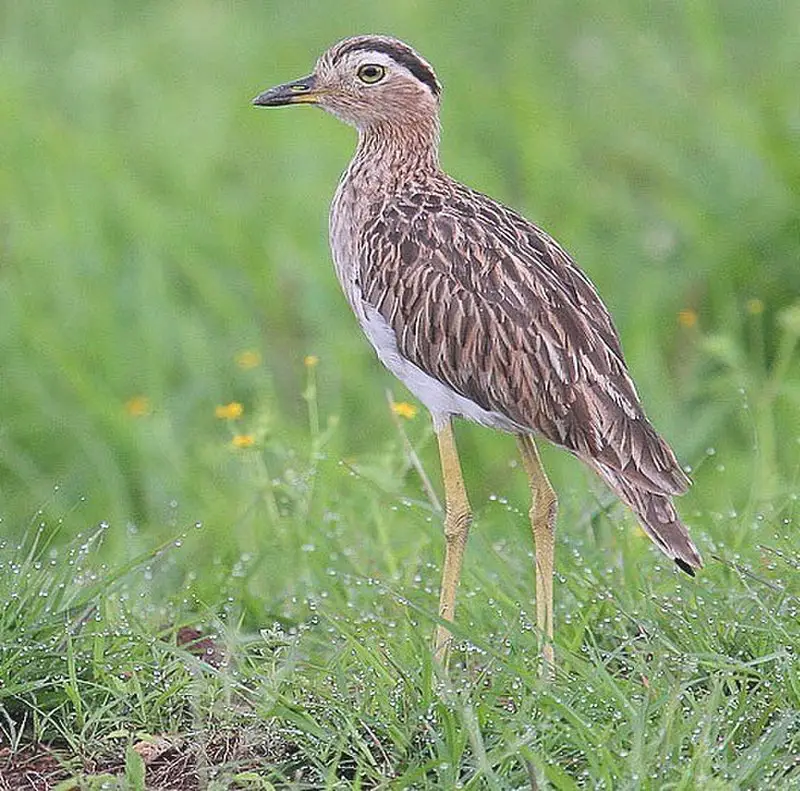
The double-striped thick-knee is a species of stone curlew, belonging to the family Burhinidae. It has long legs with prominent joints and two stripes on its head pattern that give it its name ‘bistriatus’.
This bird was first described in 1829 by Johann Georg Wagler from a specimen found in Mexico.
Its plumage varies between shades of grey and brown depending on the season, allowing for camouflage when perching or nesting amongst rocks or shrubs.
Double striped thick knees are usually seen alone or in pairs but during breeding season they may gather together into small flocks.
They feed mainly on insects such as locusts, crickets and grasshoppers which they catch using their strong beak after running around like chickens.Scientific classification:
| Kingdom | Animalia |
| Phylum | Chordata |
| Class | Aves |
| Order | Charadriiformes |
| Family | Burhinidae |
| Genus | Burhinus |
| Species | B. bistriatus |
13. Waxwing Birds
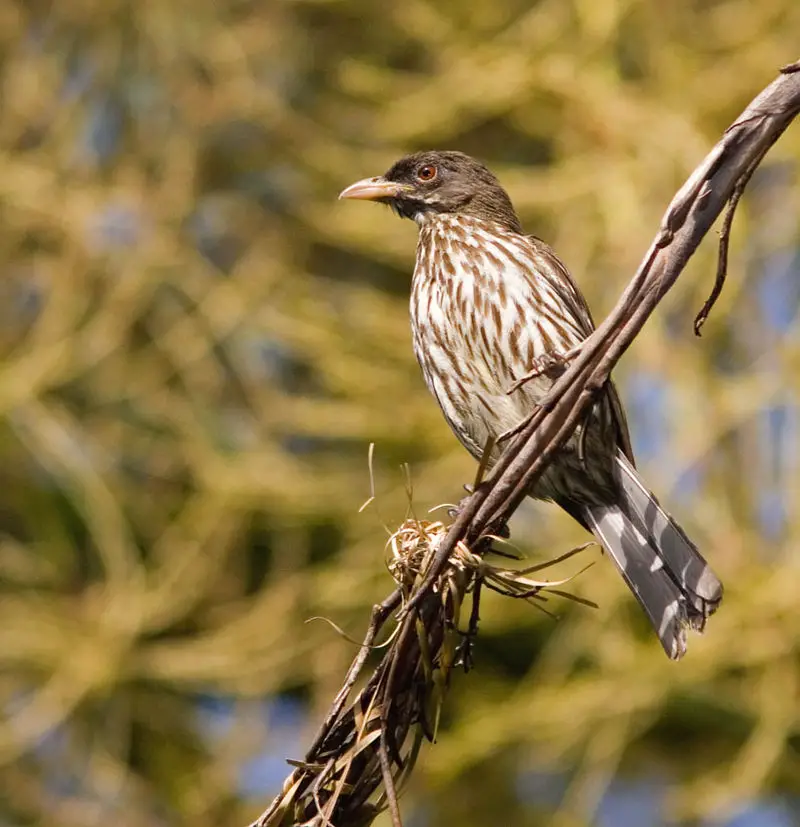
Waxwings are small, elegant birds with distinctive crests and bright red tips on their wings. They feed primarily on fruits during the winter months, but can also consume insects for additional protein.
Generally found in northern regions of North America and Eurasia, these plump-bodied birds have a habit of congregating in large numbers to feast upon berries or other food sources when they become abundant.
Waxwing species differ among each other by size, plumage coloration and even behavior; some may be more aggressive than others while competing for resources within a flock.
These social creatures enjoy living together as flocks throughout the year which aids them in finding food quickly and efficiently amongst their group members.
14. Threskiornithidae
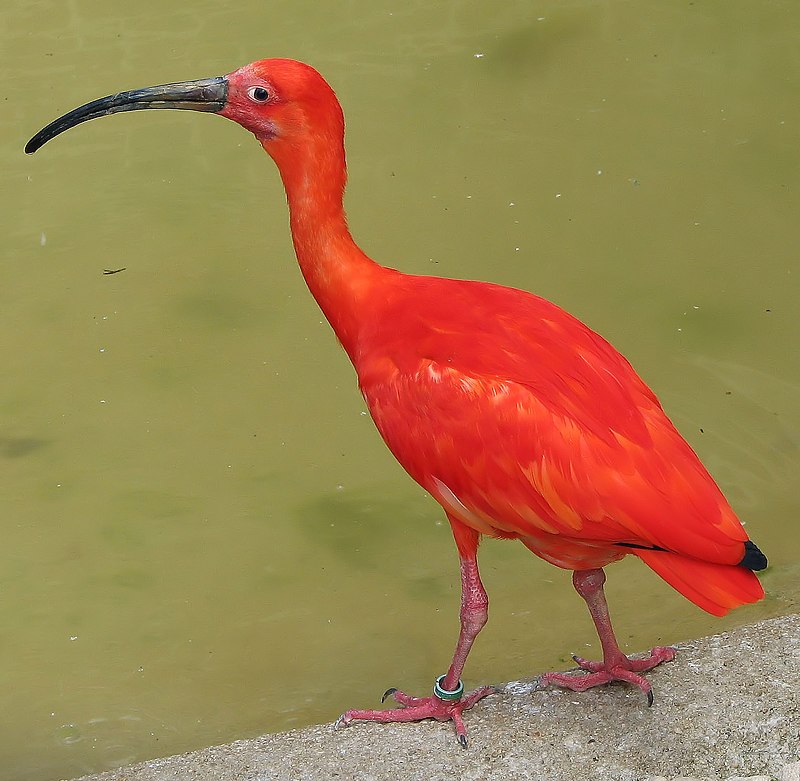
Threskiornithidae is a family of large wading birds which includes 36 species. These birds are traditionally divided into two subfamilies – the ibises and the spoonbills.
However, recent genetic analysis has shown that spoonbills actually belong to Old World ibis group, while New World ibises form an early offshoot from this lineage.
Threskiornithidse members have long curved beaks with serrated edges used for catching fish in shallow water or mudflats, as well as other aquatic invertebrates like crustaceans and mollusks.
They also feed on plant matter such as grains and seeds found close to wetlands areas where they live.
This diverse diet makes them important scavengers in their ecosystems, helping maintain healthy populations of native wildlife by controlling insect numbers and dispersing energy-rich seeds throughout wetland habitats.Scientific classification:
| Kingdom | Animalia |
| Phylum | Chordata |
| Class | Aves |
| Order | Pelecaniformes |
| Suborder | Ardei |
| Family | Threskiornithidae Richmond, 1917 |
15. Greater Antillean Grackle
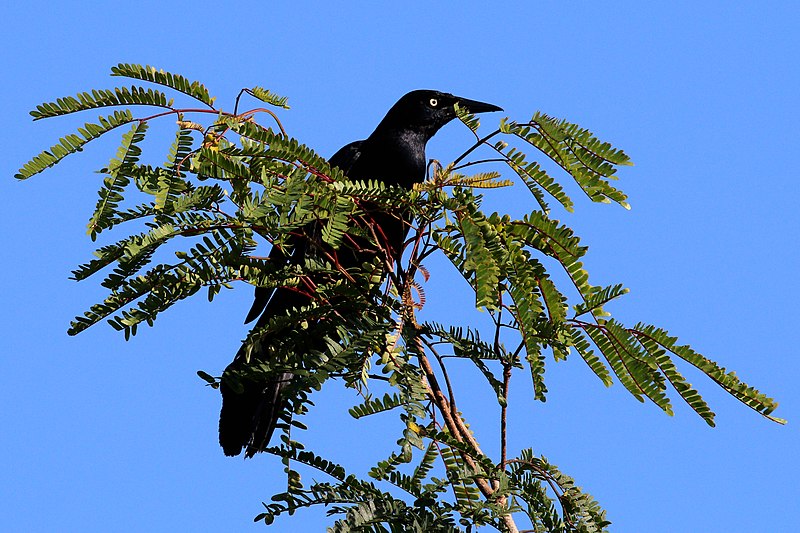
The Greater Antillean grackle is a large, sociable bird found in the Caribbean. It inhabits heavily populated areas and its call has been described as “kling-kling” or “chinchilin” in the Dominican Republic, “ching ching” in the Cayman Islands and ‘Chango’ by Puerto Rico locals.
They are mostly black with green iridescence on their upperparts, wings and tail feathers.
These birds feed mainly of insects but also consume fruits from trees like guava and mangoes.
Their diet supplements can include breadcrumbs from picnic tables that they often frequent near human dwellings for food scraps left behind by humans which allow them to survive even during dry seasons when other sources of food become scarce.Scientific classification:
| Kingdom | Animalia |
| Phylum | Chordata |
| Class | Aves |
| Order | Passeriformes |
| Family | Icteridae |
| Genus | Quiscalus |
| Species | Q. niger |
Also Featured In: Birds that You’ll Find in Puerto Rico, British Virgin Islands Birds You Need to See
16. Antillean Siskin
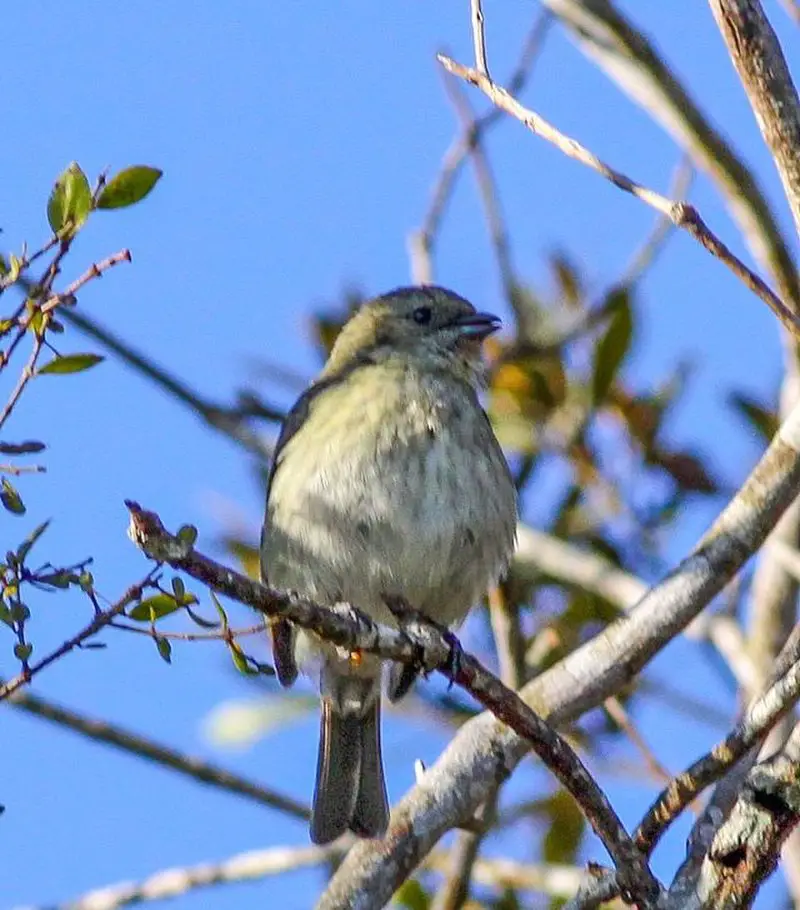
The Antillean siskin is a small, colourful finch native to Hispaniola. It has bright yellow plumage on its head and body, contrasting with a black bib and wings.
This species can only be found in the Caribbean region – namely Haiti and the Dominican Republic – where it inhabits subtropical or tropical moist montane forests as well as degraded former forest areas.
The siskin is thought to be the oldest extant North American bird species still alive today. Its diet consists of seeds, fruits, buds and insects which are gleaned from leaves or taken directly off trees while flying between branches.
Conservation efforts must remain focused on preserving this beautiful avian’s natural habitat so that future generations may admire its unique characteristics for years to come.Scientific classification:
| Kingdom | Animalia |
| Phylum | Chordata |
| Class | Aves |
| Order | Passeriformes |
| Family | Fringillidae |
| Subfamily | Carduelinae |
| Genus | Spinus |
| Species | S. dominicensis |
17. Hispaniolan Mango
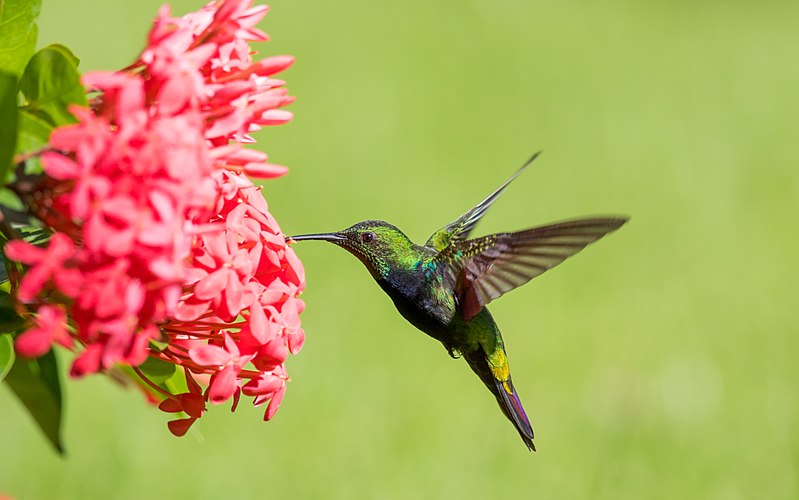
The Hispaniolan mango bird is a species of hummingbird native to the Caribbean island of Hispaniola. It was first described by Swedish naturalist Carl Linnaeus in 1766, under the binomial name Trochilus dominicus.
This vibrant and colourful bird has an olive-green upperparts with dusky wings and tail, while its head is white with a black mask on either side of its face.
Its belly is also bright yellow or golden in colour. The male can be identified easily as it has two elongated central feathers protruding from his crown that are tipped with iridescent copper-red tips.
These birds feed primarily on nectar but they will occasionally eat some insects too for protein intake.
They live mainly at low altitudes such as mountainside forests and shrublands, where there’s plenty flowering plants for them to feast upon.Scientific classification:
| Kingdom | Animalia |
| Phylum | Chordata |
| Class | Aves |
| Order | Apodiformes |
| Family | Trochilidae |
| Genus | Anthracothorax |
| Species | A. dominicus |
18. Narrow-Billed Tody
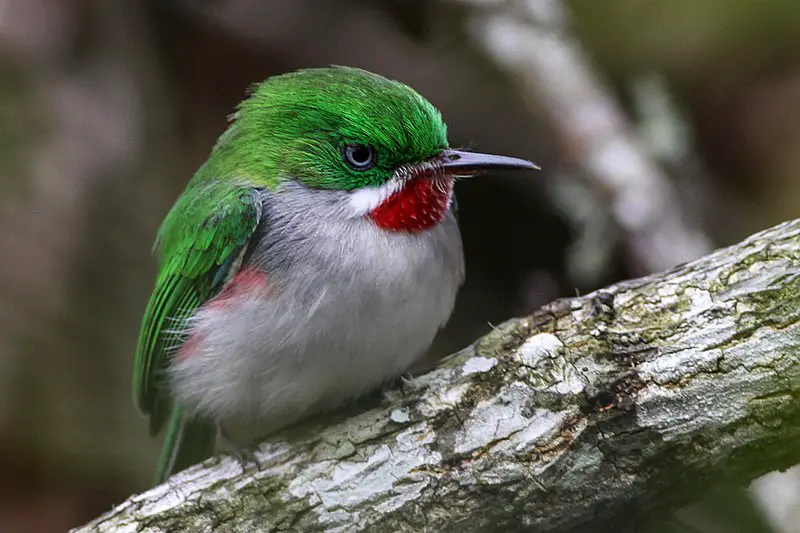
The Narrow-billed tody is a species of bird found only on the Caribbean island Hispaniola, shared by the Dominican Republic and Haiti. It has a distinctive narrow bill, hence its name.
This small colorful bird measures up to 4 inches in length and features an olive green back with yellowish head, throat and chest as well as white underparts. The male also sports two black stripes above each eye while females have one stripe per eye.
These birds feed mainly on insects which they capture from foliage or catch out of midair using their wings for balance during flight maneuvers.
They are usually seen singly or in pairs but rarely form larger flocks like other types of Todidae family members do.
Narrow-billed todies inhabit forests both dry and wet, evergreen shrubs near riversides and even urban gardens where trees provide plenty food sources such as caterpillarsScientific classification:
| Kingdom | Animalia |
| Phylum | Chordata |
| Class | Aves |
| Order | Coraciiformes |
| Family | Todidae |
| Genus | Todus |
| Species | T. angustirostris |
19. Greater Antillean Bullfinch
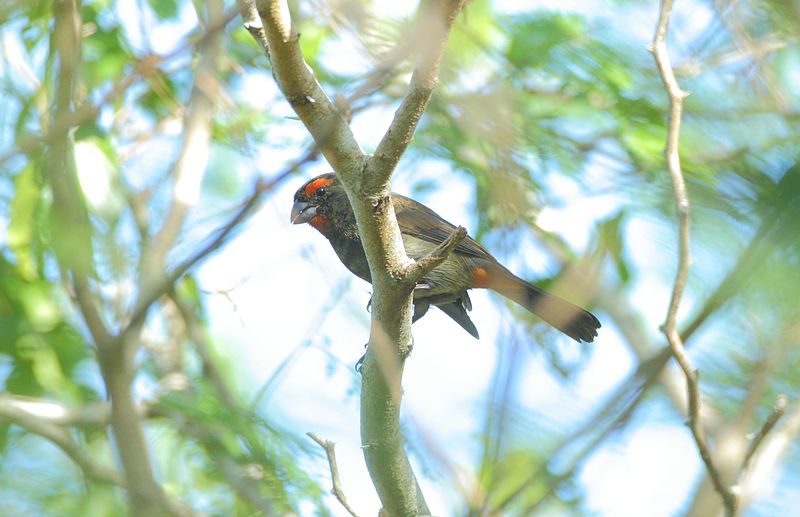
The Greater Antillean Bullfinch is a species of bird in the Thraupidae family. It can be found across many places, like the Bahamas, Hispaniola (Dominican Republic and Haiti), Jamaica, and Turks & Caicos Islands.
This beautiful bird prefers to inhabit subtropical or tropical dry forests as well as moist lowland/montane forests.
Its main features are its bright yellow bill with pink gape flange, olive green upperparts while underparts have grey tinge on them along with some white markings near breast area.
All these characteristics help it stand out from other birds living in similar habitats.Scientific classification:
| Kingdom | Animalia |
| Phylum | Chordata |
| Class | Aves |
| Order | Passeriformes |
| Family | Thraupidae |
| Genus | Melopyrrha |
| Species | M. violacea |
Also Featured In: Common Birds of Turks and Caicos Islands,
20. Yellow-Throated Warbler
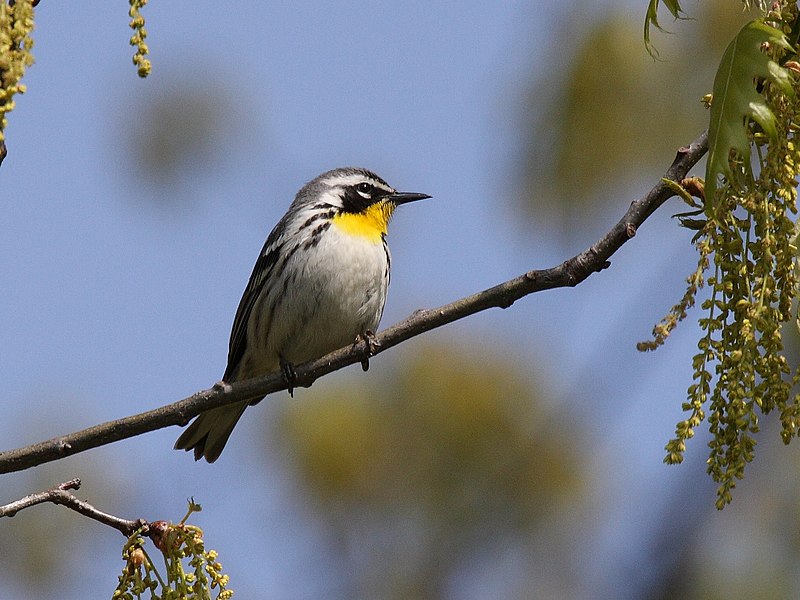
The Yellow-throated Warbler (Setophaga dominica) is a small migratory songbird found in temperate North America. It belongs to the Parulidae family of New World warblers.
Males have grey upperparts and wings with double white wing bars, yellow throats, and white underparts streaked with black on the flanks.
Females are less brightly colored, having olive green or brownish gray back and wings with two faint wingbars instead of one bright one visible in males.
These birds feed mainly on insects during their breeding season but will also eat fruits at other times of year while they migrate southwards for wintering grounds where they will search for nectar from flowers as well as fruit sources such as berries and wild grapes.
They can be seen actively searching through trees for food items near bird feeders during migration time periods making them an interesting species to observe.Scientific classification:
| Kingdom | Animalia |
| Phylum | Chordata |
| Class | Aves |
| Order | Passeriformes |
| Family | Parulidae |
| Genus | Setophaga |
| Species | S. dominica |
Also Featured In: Birds in Iowa Spring, Yellow Georgia Birds
21. Regulidae

Waxwings are small, elegant birds with distinctive crests and bright red tips on their wings. They feed primarily on fruits during the winter months, but can also consume insects for additional protein.
Generally found in northern regions of North America and Eurasia, these plump-bodied birds have a habit of congregating in large numbers to feast upon berries or other food sources when they become abundant.
Waxwing species differ among each other by size, plumage coloration and even behavior; some may be more aggressive than others while competing for resources within a flock.
These social creatures enjoy living together as flocks throughout the year which aids them in finding food quickly and efficiently amongst their group members.
22. Stone-Curlew

Stone-curlews, also known as dikkops or thick-knees, are a family of birds that have adapted to live in tropical and temperate regions throughout the world.
They can be found in Africa, Asia and Australia with two or more species per region. Despite being classified as waders, most prefer dry arid habitats over moist wetlands.
Stone-curlews typically have long legs which help them navigate through their preferred terrain efficiently; some species even stand at an impressive height when standing on those long legs.
Additionally they feature cryptic plumage which helps them blend into their surroundings while hunting for prey such as insects and small mammals like rodents.
These unique bird’s calls are easily recognizable; it has been said that hearing one is similar to listening to someone whistling ‘Keee Weee’.Scientific classification:
| Kingdom | Animalia |
| Phylum | Chordata |
| Class | Aves |
| Order | Charadriiformes |
| Suborder | Chionidi |
| Family | Burhinidae Mathews, 1912 |
23. New World Quail
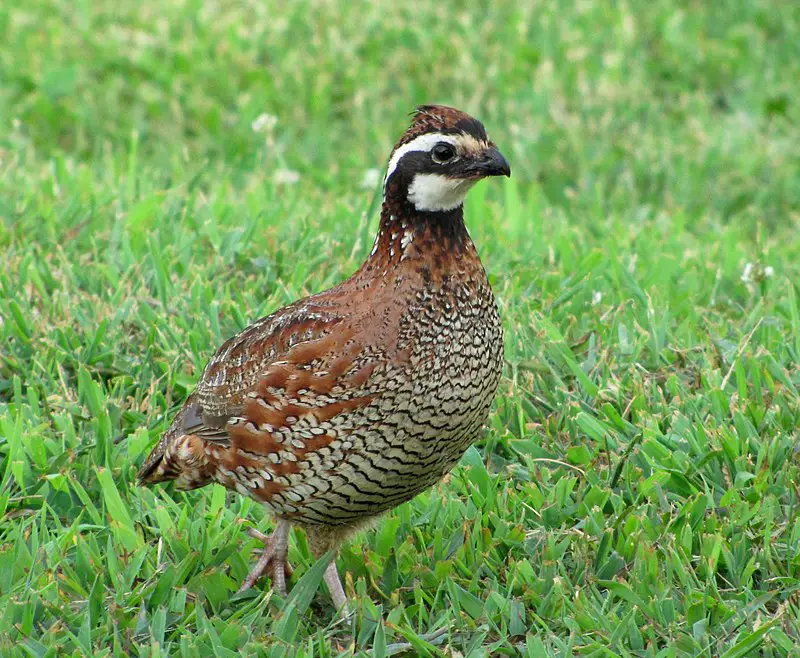
New World quail are small birds found in the Americas, from Canada to Brazil. They belong to their own family, Odontophoridae, and have similar appearance and habits as Old World quail which belong to a different family.
New World Quails come in various species such as California Quail and Bobwhite Quail.
These birds have adapted well to human presence due to availability of food resources like agricultural crops.
They also live close together where they form large flocks for safety against predators like foxes or hawks.
The males usually sport colorful feathers during mating season that helps them attract female mates while providing an amazing sight for us viewers.Scientific classification:
| Kingdom | Animalia |
| Phylum | Chordata |
| Class | Aves |
| Order | Galliformes |
| Superfamily | Phasianoidea |
| Family | Odontophoridae Gould, 1844 |
24. Stilts And Avocets
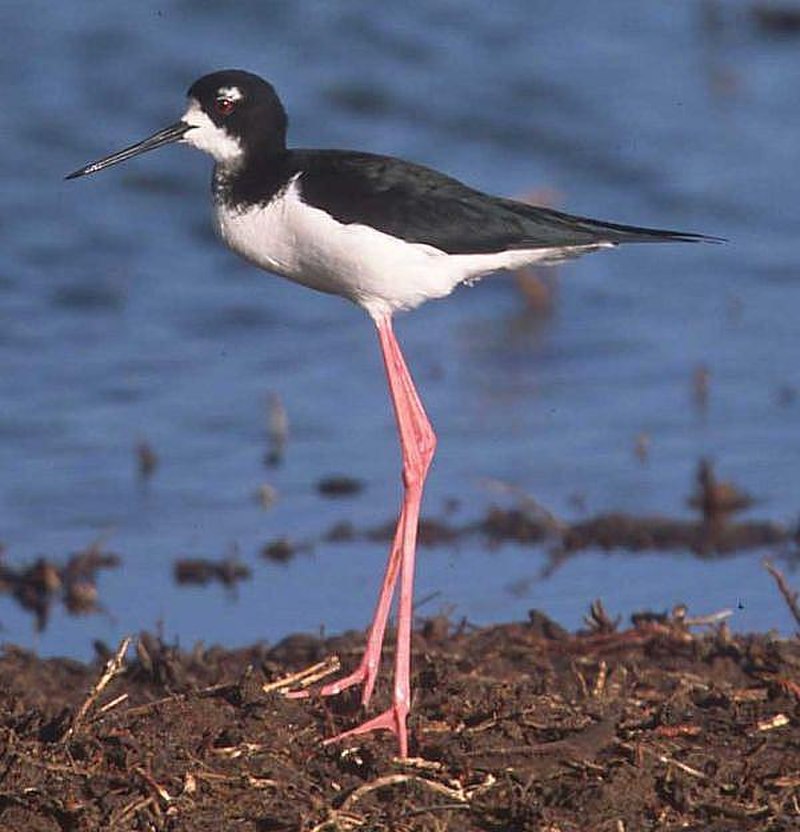
Stilts and avocets are two distinct groups of birds belonging to the family Recurvirostridae. They range in length from 30-46 cm (12-18 inches) and weigh between 140 – 435 g (4.9 – 15.3 ounces).
Males usually have slightly larger bodies than females, with long thin legs, necks and bills.
Avocet bills curve upwards uniquely while stilt beaks remain straight most times.
These wading birds live mainly near shorelines or wetlands where they feed on aquatic invertebrates like brine shrimp, insects etc., occasionally supplementing their diet with seeds or small fish too.
Stilts also inhabit open fields in search of food sources such as earthworms or grasshoppers during the non-breeding season.
Both groups migrate over large distances for warmer weathers when it gets cold outside.Scientific classification:
| Kingdom | Animalia |
| Phylum | Chordata |
| Class | Aves |
| Order | Charadriiformes |
| Suborder | Charadrii |
| Family | Recurvirostridae Bonaparte, 1854 |
25. Gnatcatcher
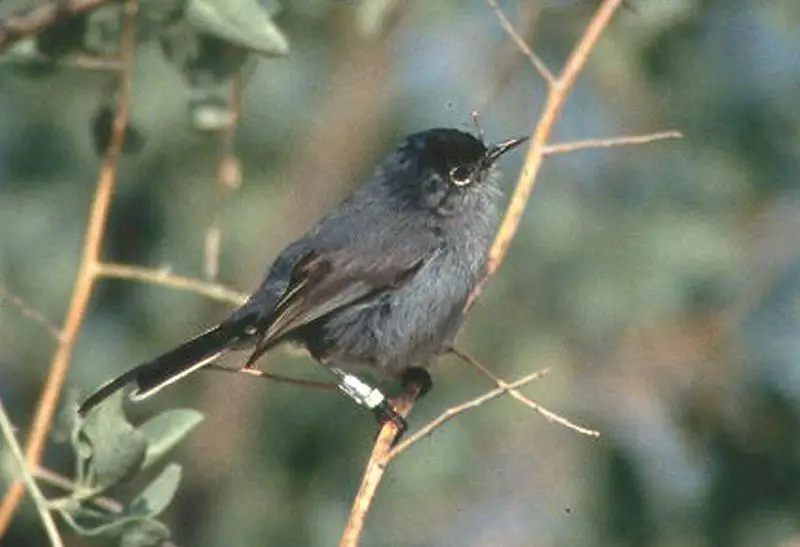
Gnatcatchers are small passerine birds from the family Polioptilidae. They inhabit North and South America, apart from far south regions and high Andean areas.
Most species of this mostly tropical and subtropical group remain in one area year-round; however, the blue-grey gnatcatcher of U.S.A and Canada migrate to warmer climates during wintertime.
Gnatcatchers share a close relation with wrens.[1] The size varies between 5–7 inches long depending on specie, they typically have dark upperparts while their underparts range in color: white or greyish shades may predominate but some species show yellow tinting too.
Their diet consists mainly insects which is usually captured by short sallies above vegetation level when foraging for food.Scientific classification:
| Kingdom | Animalia |
| Phylum | Chordata |
| Class | Aves |
| Order | Passeriformes |
| Superfamily | Certhioidea |
| Family | Polioptilidae Baird, 1858 |
26. La Selle Thrush
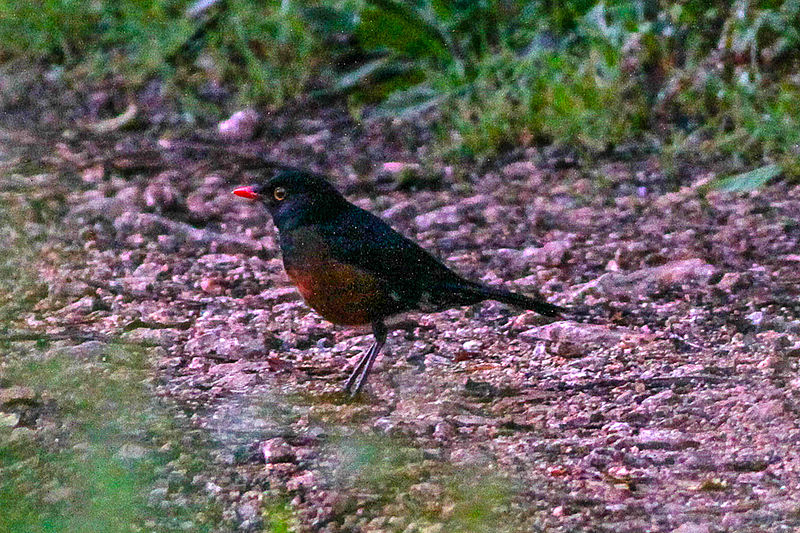
The La Selle thrush is an endemic bird species found in Hispaniola, a Caribbean island shared by the Dominican Republic and Haiti.
It is a skulker of broadleaf and pine forests located around 1300m elevation where it has limited population which continues to decline due to habitat destruction.
Its name comes from Pic la Selle, Haiti where its relict population lives.
The La Selle Thrush is identified as having rusty-brown upperparts and white underparts with dark spots along the sides of its neck area, making it easy to differentiate from other birds within its range.
Unfortunately because of human activities such as deforestation this beautiful creature’s future remains uncertain but conservation efforts are being made for them in both countries they inhabit so that we can continue admiring them for years to come.Scientific classification:
| Kingdom | Animalia |
| Phylum | Chordata |
| Class | Aves |
| Order | Passeriformes |
| Family | Turdidae |
| Genus | Turdus |
| Species | T. swalesi |
27. White-Necked Crow
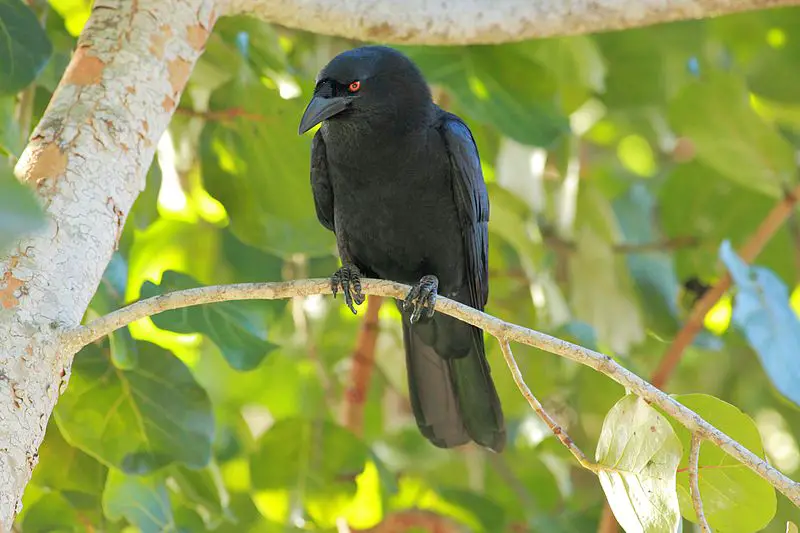
The White-necked Crow is the largest of all Caribbean corvids. It is native to Hispaniola, an island split between Haiti and Dominican Republic.
Unfortunately this species has been wiped out from Puerto Rico due to relentless human activities such as forest clearance and hunting.
Two other crow species that are closely related to it include Cuban Crow (C. nasicus) and Jamaican Crow (C. jamaicensis). This bird stands at a height of approximately 50 cm with its wingspan reaching up to 110cm in length.
Its plumage is composed mainly black feathers although its neck appears white on closer inspection; hence giving it its name -White-Necked Crow.
Despite being so large they aren’t considered a threat but actually make excellent scavengers keeping their environment clean by feeding off dead animals or waste products left behind by humans .Scientific classification:
| Kingdom | Animalia |
| Phylum | Chordata |
| Class | Aves |
| Order | Passeriformes |
| Family | Corvidae |
| Genus | Corvus |
| Species | C. leucognaphalus |
28. Hispaniolan Pewee
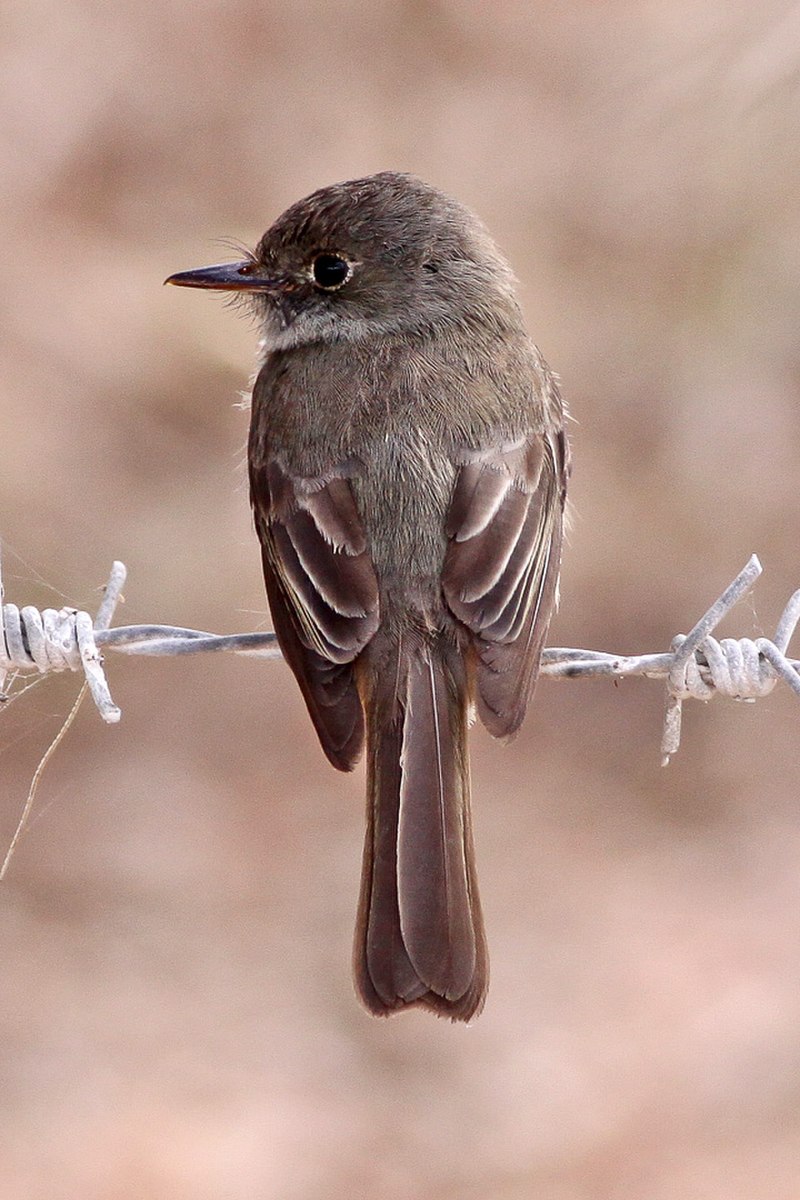
The Hispaniolan pewee is a species of flycatcher found exclusively on the Caribbean island of Hispaniola. It has greyish-brown upperparts and whitish underparts with yellow wing bars, making it easily identifiable in its native habitat.
Its call consists of loud squeaks and high whistles which can often be heard during daytime hours.
As an endemic bird to this island, it plays an important role in maintaining the ecological balance by controlling insects such as mosquitoes and beetles that could damage crops or cause discomfort for humans nearby.
The main threats to their populations are deforestation due to agricultural expansion into natural habitats, climate change, loss of food sources from insecticides used around farms and competition from other nonnative birds entering their range.
Conservation efforts must focus on protecting remaining forests while also promoting sustainable agriculture practices so both people and wildlife may continue coexisting harmoniously together within these tropical landscapes.Scientific classification:
| Kingdom | Animalia |
| Phylum | Chordata |
| Class | Aves |
| Order | Passeriformes |
| Family | Tyrannidae |
| Genus | Contopus |
| Species | C. hispaniolensis |
29. Flat-Billed Vireo
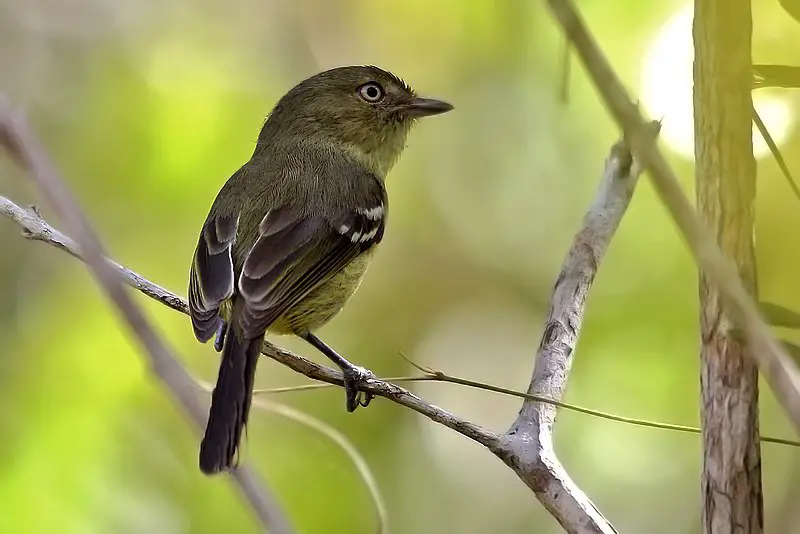
The Flat-billed vireo is an amazing bird found only on the Caribbean island of Hispaniola, split between Haiti and the Dominican Republic.
This species belongs to the Vireonidae family and it inhabits subtropical or tropical dry forests that provide a perfect habitat for them.
The flat-billed vireo has olive upper parts with darker wings, white underparts as well as two whitish wing bars along its body.
It also has a large black eye patch in front of its eyes which are yellowish in color, giving it an attractive look.
Additionally, this beautiful small bird can be identified by its unique ‘flat bill’ which is slightly curved towards downwards direction.
Although threatened due to deforestation caused by human activities such as logging and agricultural development; these birds continue to make their home on Hispaniola Island where they remain safe from predators thanks to their camouflaging colors.Scientific classification:
| Kingdom | Animalia |
| Phylum | Chordata |
| Class | Aves |
| Order | Passeriformes |
| Family | Vireonidae |
| Genus | Vireo |
| Species | V. nanus |
30. Black-Crowned Tanager
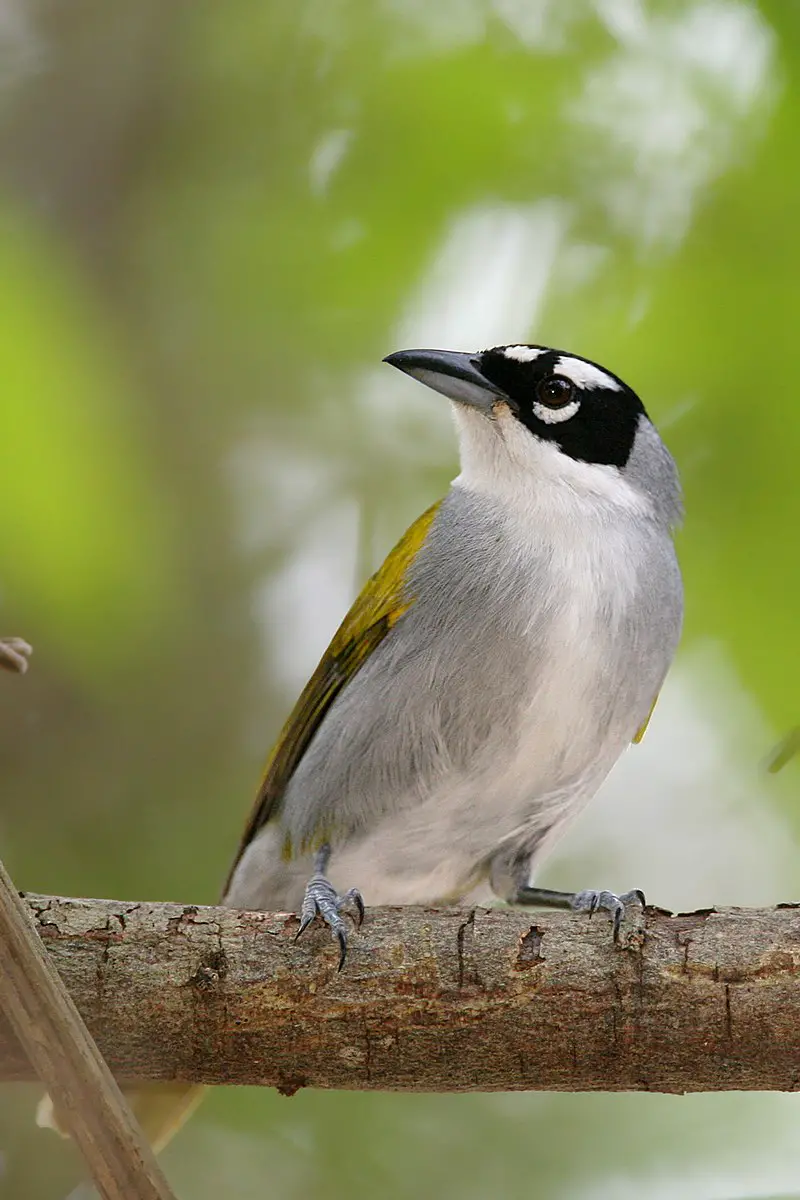
The Black-crowned Tanager (Phaenicophilus palmarum) is a species of bird that belongs to the Phaenicophilidae family. Native to Hispaniola, this tanager was first described by French zoologist Mathurin Brisson in 1760.
This small and compact songbird has an olive upper body with black wings, tail and head; its belly is yellowish white in color. It feeds mainly on insects but also eats fruits from trees like palms or figs when available.
During breeding season they can often be seen gathering together around palm fronds while they search for food or sing their distinctive songs full of whistles and trills.
Although not currently threatened, it’s important we monitor their population as deforestation continues throughout Hispaniola so that future generations may continue to enjoy the beauty of these birds.Scientific classification:
| Kingdom | Animalia |
| Phylum | Chordata |
| Class | Aves |
| Order | Passeriformes |
| Family | Phaenicophilidae |
| Genus | Phaenicophilus |
| Species | P. palmarum |
31. Hispaniolan Woodpecker
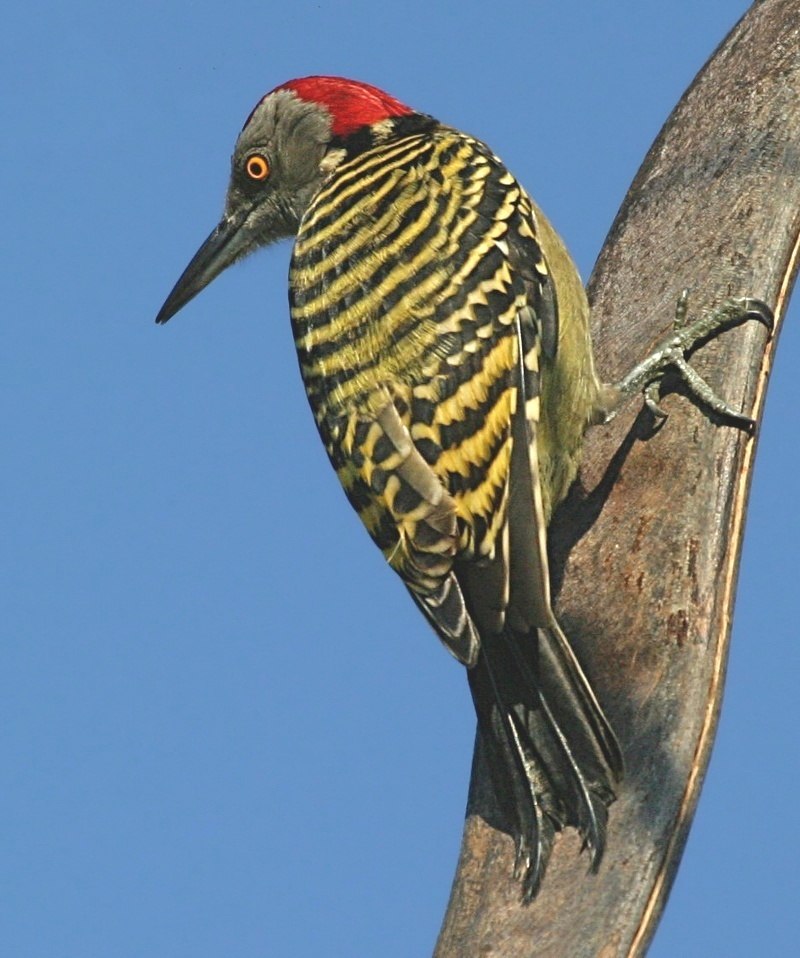
The Hispaniolan woodpecker is a beautiful bird endemic to the Caribbean island of Hispaniola. It has gold and black barred feathers, with males having an added red crown and nape.
The male also has a longer beak than the female, with its upper neck being white in coloration.
This medium-sized woodpecker grows up to 22 – 28 cm long and can often be seen pecking away at tree bark or logs while looking for food such as insects larvae, spiders, lizards and other small animals.
They mainly inhabit broadleaf forests but can also sometimes be found near plantations or secondary growth areas too.
With their distinctive calls heard throughout these habitats during mating season it’s easy to spot them amongst any greenery that you may come across on this lovely island.Scientific classification:
| Kingdom | Animalia |
| Phylum | Chordata |
| Class | Aves |
| Order | Piciformes |
| Family | Picidae |
| Genus | Melanerpes |
| Species | M. striatus |
Also Featured In: Caribbean Birds,
32. Antillean Euphonia
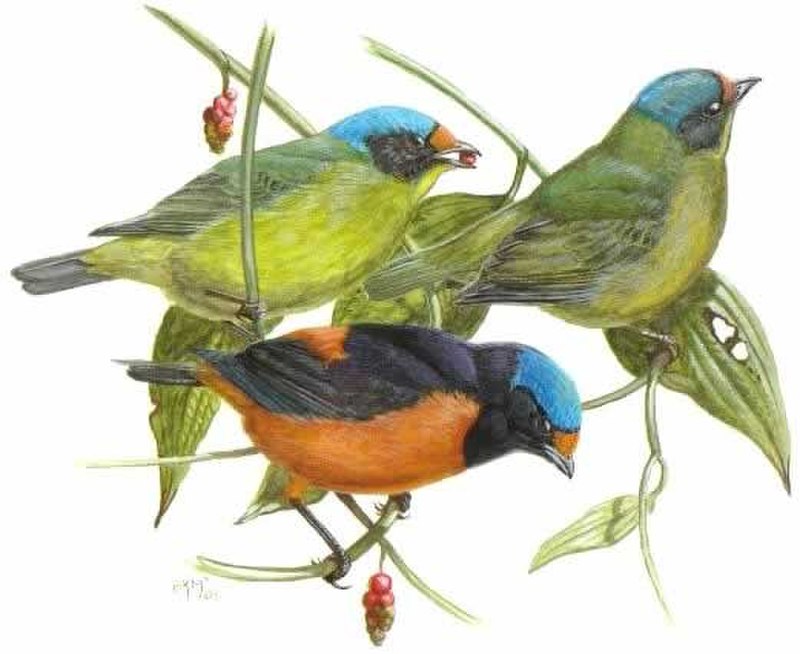
The Antillean euphonia is a colorful and beautiful bird species found across the Lesser Antilles, Hispaniola (Dominican Republic and Haiti) and Puerto Rico.
It belongs to Fringillidae family of finches. This small songbird has strong yellow feathers on its head with blue-green upperparts while they have bright orange breasts and bellies.
Their wings are blackish with white tips, giving them an attractive look when flying in flocks through woodlands or forest edges.
They inhabit subtropical or tropical dry forests as well as moist lowland forests including degraded former ones too.
The populations of this species are declining due to deforestation but still remain common throughout their range if habitats can be preserved for their long term future survival.Scientific classification:
| Kingdom | Animalia |
| Phylum | Chordata |
| Class | Aves |
| Order | Passeriformes |
| Family | Fringillidae |
| Subfamily | Euphoniinae |
| Genus | Chlorophonia |
| Species | C. musica |
Also Featured In: Martinique Island Birds You Should Know, Native Birds Of Guadeloupe Island
33. Black-Capped Petrel
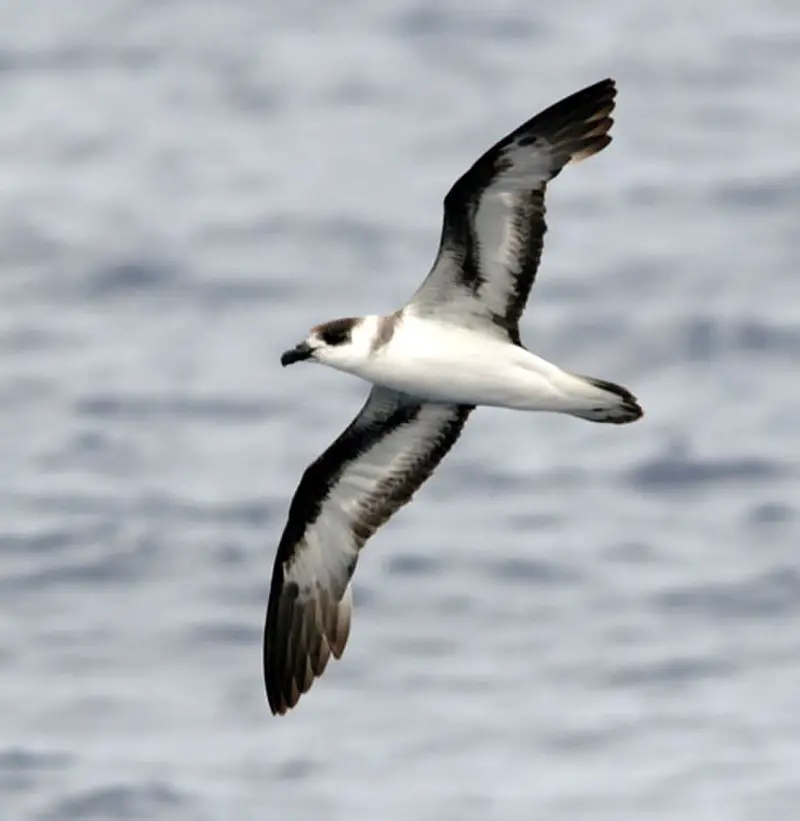
The Black-capped Petrel is a small seabird native to the West Indies. It has grey-brown back and wings, with a white nape and rump.
Its distinct feature is its black cap which extends to cover the eye in some individuals.
They have mainly white underparts apart from dark underwing markings as well.
These birds typically feed on crustaceans, fish eggs, squid or jellyfish plucked out of water while flying low over it with their relatively long wingspan aiding them in flight efficiency and speed.
Breeding season occurs around July-September during which they inhabit rocky cliff ledges near the shorelines for nesting purposes where they lay one egg at a time per nest.Scientific classification:
| Kingdom | Animalia |
| Phylum | Chordata |
| Class | Aves |
| Order | Procellariiformes |
| Family | Procellariidae |
| Genus | Pterodroma |
| Species | P. hasitata |
34. Palm Crow
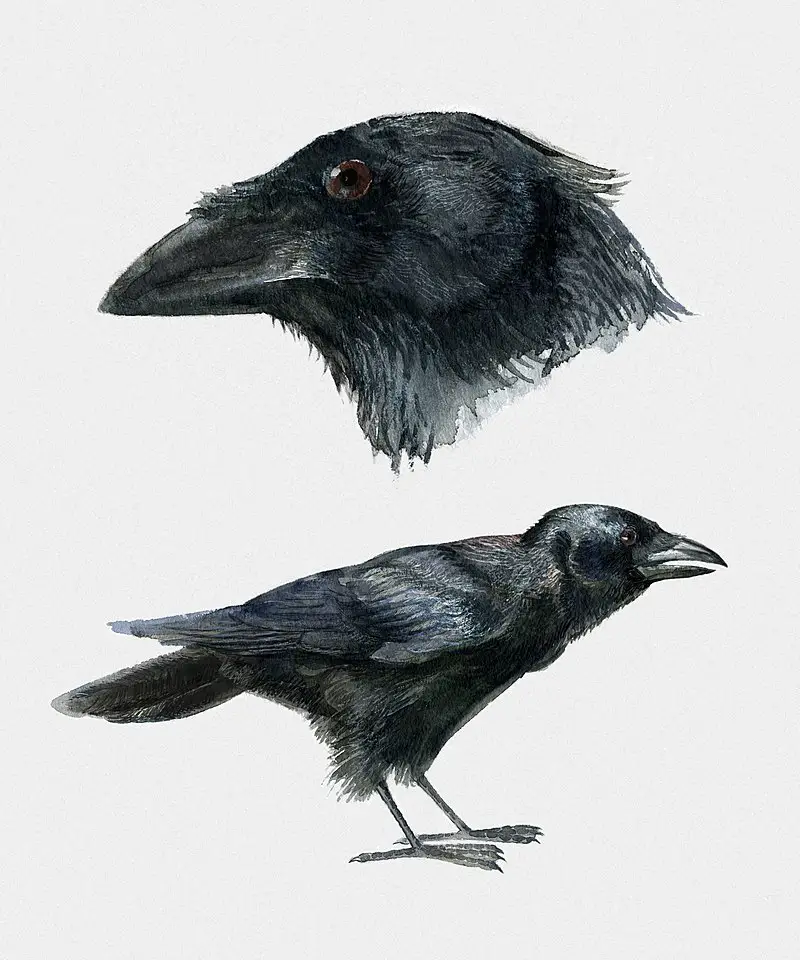
The Palm Crow is a small corvid native to the Caribbean islands of Hispaniola and Cuba. It has two subspecies; one found on each island, with the Cuban variety being slightly smaller in size.
While it used to be very common across both islands, its population has been significantly reduced in recent times.
The Palm crow is known for its distinctive black plumage, which contrasts sharply against its white belly feathers – giving them an almost two-tone appearance when viewed from certain angles.
This species also boasts long legs that are well suited for picking through dense vegetation or wading into shallow water looking for food sources like insects and other invertebrates as well as some fruits and seeds.
Its loud call can often be heard echoing throughout their range making this bird quite easy to identify even if you don’t get a chance to see it up close.Scientific classification:
| Kingdom | Animalia |
| Phylum | Chordata |
| Class | Aves |
| Order | Passeriformes |
| Family | Corvidae |
| Genus | Corvus |
| Species | C. palmarum |
35. Black-Whiskered Vireo
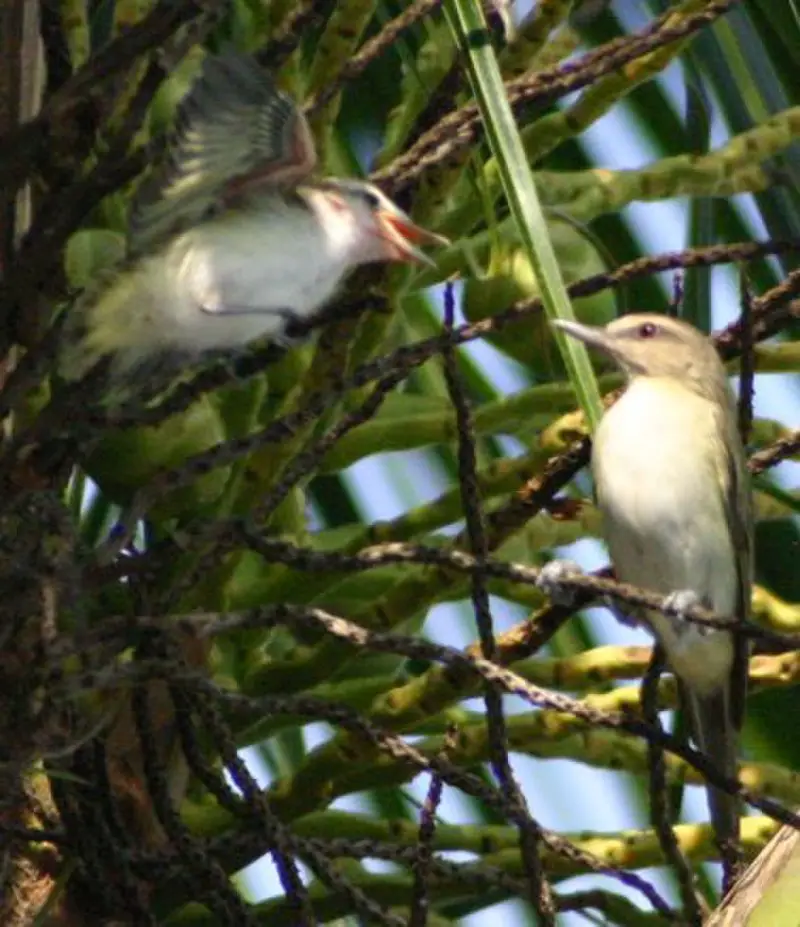
The black-whiskered vireo is a small passerine bird, found in the southern United States, West Indies and northern South America.
It breeds mainly in open deciduous wooded areas but has been known to be an occasional vagrant to Costa Rica.
This species migrates partially north during its winter season from Greater Antilles up towards northern parts of South America.
The male can easily be identified by his distinctive black whiskers on either side of its face while females are generally duller with white streaks along their wings and back.
They make nests at mid tree levels usually out of twigs, grasses or strips of bark which they line with finer materials like feathers or fur for insulation purposes.
All in all these birds are delightful additions to any habitat where they inhabit.Scientific classification:
| Kingdom | Animalia |
| Phylum | Chordata |
| Class | Aves |
| Order | Passeriformes |
| Family | Vireonidae |
| Genus | Vireo |
| Species | V. altiloquus |
Also Featured In: Cozumel Birds You Didn’t Know, Birds You Need To Know Long Key